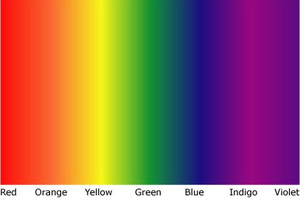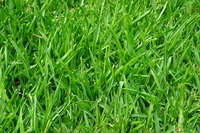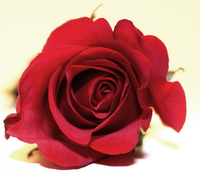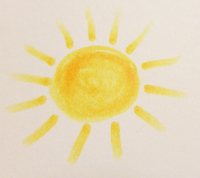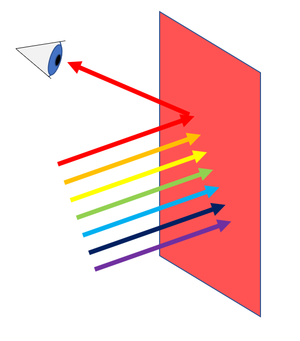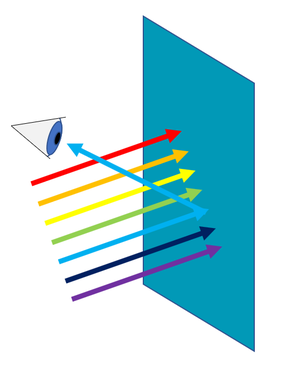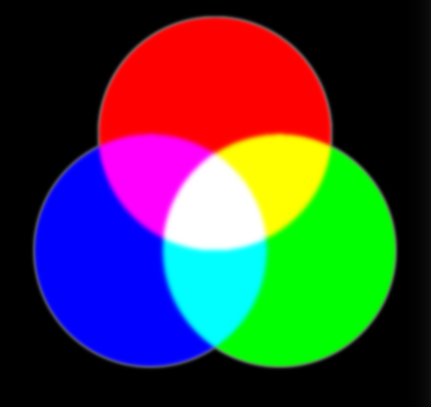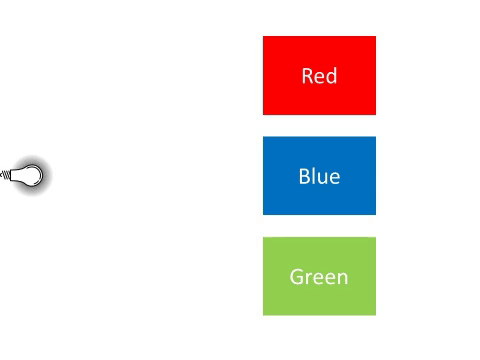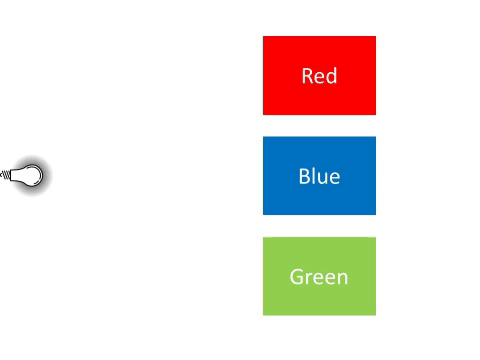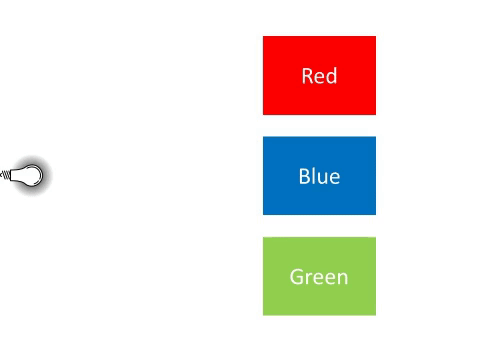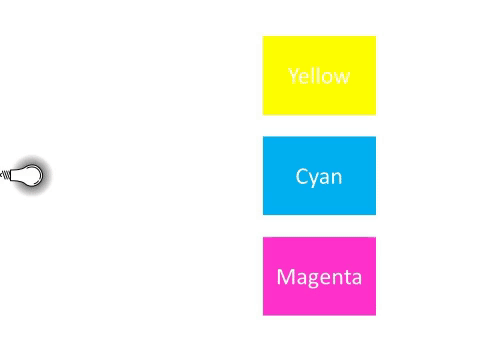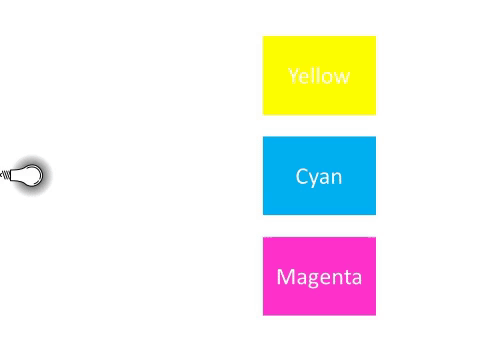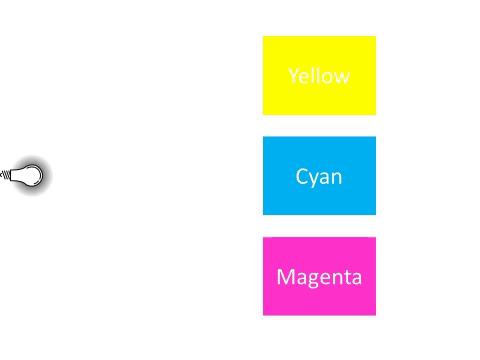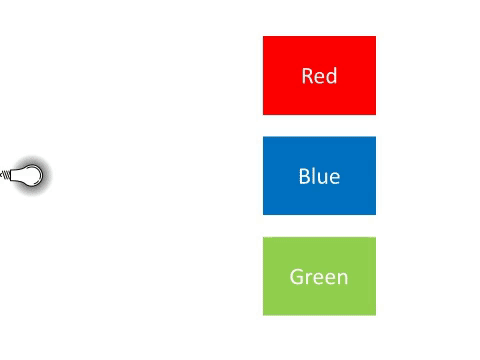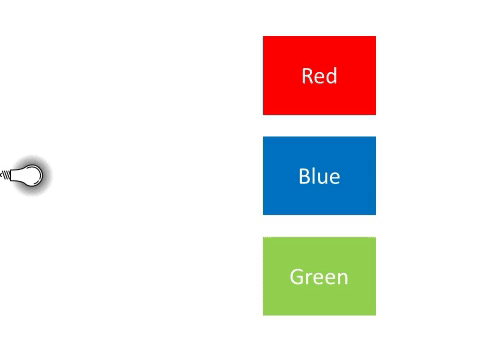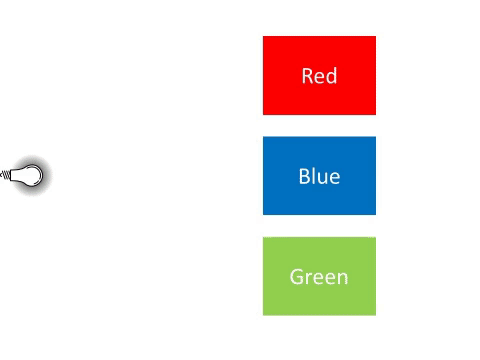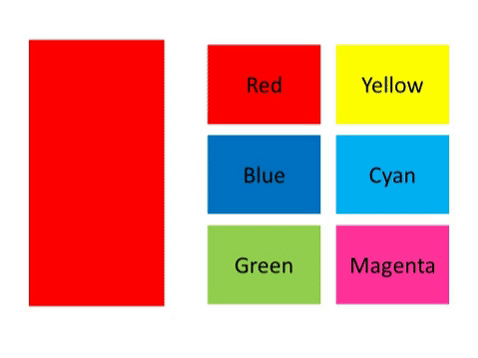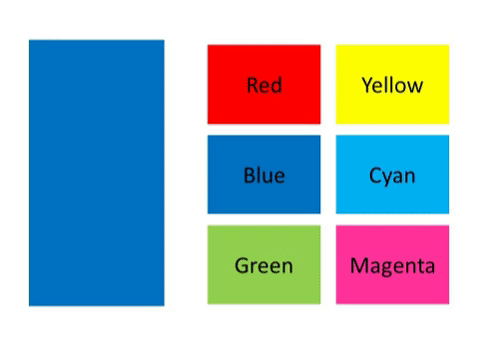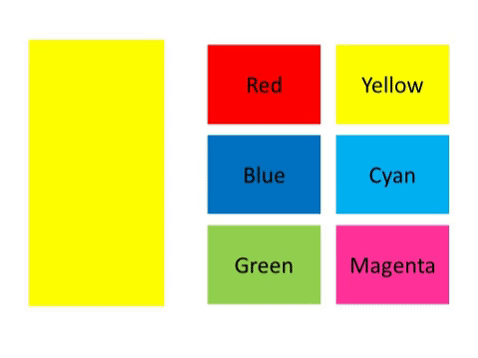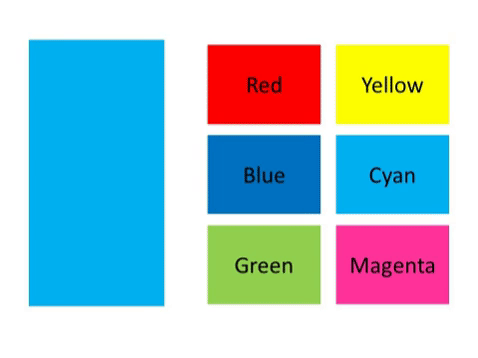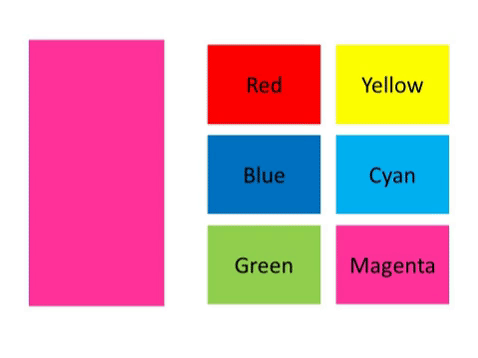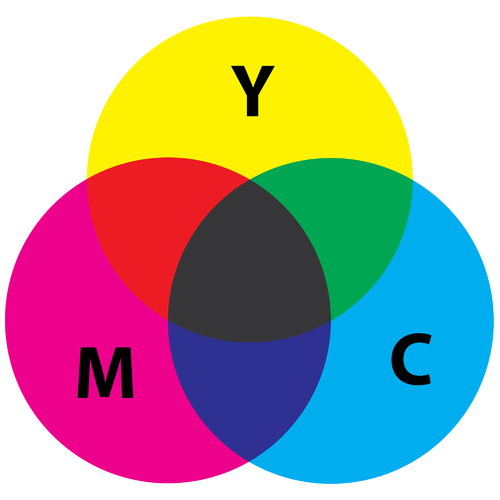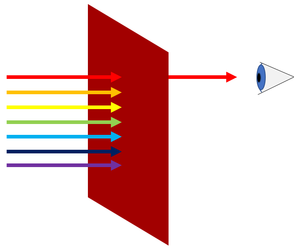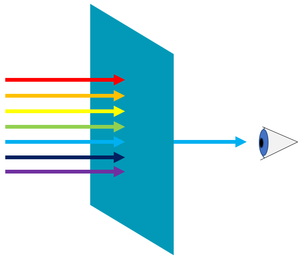Colour
Contents
Key Stage 1
Meaning
Colour is something we see with our eyes.
About Colours
The colours we can see are red, orange, yellow, green, blue, indigo and violet. If you mix colours of paint together you can get another colour. Red and yellow paint mixed together makes orange. Blue and yellow paint mixed together make green. Blue and red paint mixed together makes purple. If you mix all three you can make brown.
Examples
| Grass is a green colour. | The colour of this rose is red. |
| The sky is blue in colour. | I will colour in The Sun yellow with paint. |
Key Stage 3
Meaning
Colour is a property of objects that we can see.
About Colour
White light can be divided into 7 colours:
- Red
- Orange
- Yellow
- Green
- Blue
- Indigo
- Violet
- Red light has the lowest frequency and the longest wavelength.
- Violet light has the highest frequency and the shortest wavelength.
Colour and Objects
| A red object reflects red light but absorbs all the others colours. | A blue object reflects blue light but absorbs all the others colours. |
Eyes and Colour
- The human eyes only have three different colour sensing cells called cones. They can detect; red, green or blue light. All other colours we see are caused by a pair of different cones detecting light at the same time.
- If the red cones and blue cones both detect light then we see magenta.
- If the red cones and green cones both detect light then we see yellow.
- If the blue cones and green cones both detect light then we see cyan.
Coloured Mixing
Primary Colours
Secondary Colours
Colour Filters
|
Through a red filter: |
|
Through a blue filter: |
|
Through a green filter: |
|
Through a yellow filter: |
|
Through a cyan filter: |
|
Through a magenta filter: |
Key Stage 4
Meaning
Colour is a property of objects that we can see.
About Colour
White light can be divided into 7 colours:
- Red
- Orange
- Yellow
- Green
- Blue
- Indigo
- Violet
- Red light has the lowest frequency and the longest wavelength.
- Violet light has the highest frequency and the shortest wavelength.
- An object may appear to have a colour for three reasons:
- Reflection - An object may reflect some frequencies while absorbing others.
- Filtering - An object may be viewed through a transparent medium which absorbs certain frequencies of light.
- Scattering - An object may be viewed through a transparent medium which scatters certain frequencies of light. This is why the sky appears blue and the Sun appears yellow.
Eyes and Colour
- The human eyes only have three different colour sensing cells called cones. They can detect; red, green or blue light. All other colours we see are caused by a pair of different cones detecting light at the same time.
- If the red cones and blue cones both detect light then we see magenta.
- If the red cones and green cones both detect light then we see yellow.
- If the blue cones and green cones both detect light then we see cyan.
Coloured Mixing
Additive Colours
- The additive primary colours are Red, Blue and Green. This means when two colours of light are added, they make new colours.
Colour and Reflection
Subtractive Primary Colours
- Mixing Magenta and Cyan paints makes a new paint which absorbs green light and red light. The new paint appears blue because that is the only colour it reflects.
- Mixing Cyan and Yellow paints makes a new paint which absorbs red light and blue light. The new paint appears green because that is the only colour it reflects.
- Mixing Magenta and Yellow paints makes a new paint which absorbs green light and blue light. The new paint appears red because that is the only colour it reflects.
Adding a little extra of one colour over another can go on to give different colours.
- Magenta > Cyan gives purple.
- Cyan > Magenta gives pale blue.
- Cyan > Yellow gives turquoise.
- Yellow > Cyan gives lime green.
- Magenta > Yellow gives pink.
- Yellow > Magenta gives orange.
| A red object reflects red light but absorbs all the others colours. | A blue object reflects blue light but absorbs all the others colours. |
- Colour exists because objects absorb some frequencies of light but reflects other frequencies.
- A coloured object absorbs some colours and reflects others appearing the colour of the reflected light. For example leaves are green because the chlorophyll inside them absorbs red and blue light but not green.
- When coloured objects are mixed such as paint they absorb certain colours. The more different colour paints added, the more colours they absorb.
- In art the focus is on these subtractive primary colours; Magenta, Cyan and Yellow. When objects with these colours are mixed the object will preferentially absorb certain frequencies of light allowing only certain colours to be reflected.
Coloured Objects Under Light Coloured Light
| Light Colour | Object Colour | Appearance |
| Red | Red | Red |
| Blue | Black | |
| Green | Black | |
| Magenta | Red | |
| Cyan | Black | |
| Yellow | Red | |
| Blue | Red | Black |
| Blue | Blue | |
| Green | Black | |
| Magenta | Blue | |
| Cyan | Blue | |
| Yellow | Black | |
| Green | Red | Black |
| Blue | Black | |
| Green | Green | |
| Magenta | Black | |
| Cyan | Green | |
| Yellow | Green | |
| Magenta | Red | Red |
| Blue | Blue | |
| Green | Black | |
| Magenta | Magenta | |
| Cyan | Blue | |
| Yellow | Red | |
| Cyan | Red | Black |
| Blue | Blue | |
| Green | Green | |
| Magenta | Blue | |
| Cyan | Cyan | |
| Yellow | Green | |
| Yellow | Red | Red |
| Blue | Black | |
| Green | Green | |
| Magenta | Red | |
| Cyan | Green | |
| Yellow | Yellow |
Colour Filters
| A red filter only transmits red light but absorbs all the others colours. | A blue filter only transmits blue light but absorbs all the others colours. |
- Colour filters work by absorbing some frequencies of light while transmitting others.
- Looking through a colour filter makes any object whose colour is absorbed appear black.
| Colour Filter | Object Colour | Appearance |
| Red | Red | Red |
| Blue | Black | |
| Green | Black | |
| Magenta | Red | |
| Cyan | Black | |
| Yellow | Red | |
| Blue | Red | Black |
| Blue | Blue | |
| Green | Black | |
| Magenta | Blue | |
| Cyan | Blue | |
| Yellow | Black | |
| Green | Red | Black |
| Blue | Black | |
| Green | Green | |
| Magenta | Black | |
| Cyan | Green | |
| Yellow | Green | |
| Magenta | Red | Red |
| Blue | Blue | |
| Green | Black | |
| Magenta | Magenta | |
| Cyan | Blue | |
| Yellow | Red | |
| Cyan | Red | Black |
| Blue | Blue | |
| Green | Green | |
| Magenta | Blue | |
| Cyan | Cyan | |
| Yellow | Green | |
| Yellow | Red | Red |
| Blue | Black | |
| Green | Green | |
| Magenta | Red | |
| Cyan | Green | |
| Yellow | Yellow |
References
AQA
- Colour, page 226-7, GCSE Physics; Student Book, Collins, AQA
- Colour, pages 206-207, GCSE Physics; Third Edition, Oxford University Press, AQA
- Colour, pages 253, 254, GCSE Physics; The Complete 9-1 Course for AQA, CGP, AQA
- Colours, page 85, GCSE Physics; The Revision Guide, CGP, AQA
- Filters (colour), page 254, GCSE Physics; The Complete 9-1 Course for AQA, CGP, AQA
- Filters (colour), page 85, GCSE Physics; The Revision Guide, CGP, AQA
Edexcel
OCR
- Colour, pages 164-165, Gateway GCSE Physics, Oxford, OCR
- Colours; bromine reactions, page 233, Gateway GCSE Chemistry, Oxford, OCR
- Colours; equilibrium position, page 189, Gateway GCSE Chemistry, Oxford, OCR
- Colours; manganite/manganese ions, page 327, Gateway GCSE Chemistry, Oxford, OCR
- Colours; metal hydroxide precipitates, page 149, Gateway GCSE Chemistry, Oxford, OCR
- Colours; silver halide precipitates, page 151, Gateway GCSE Chemistry, Oxford, OCR
- Colours; transition metal compounds, page 141, Gateway GCSE Chemistry, Oxford, OCR
